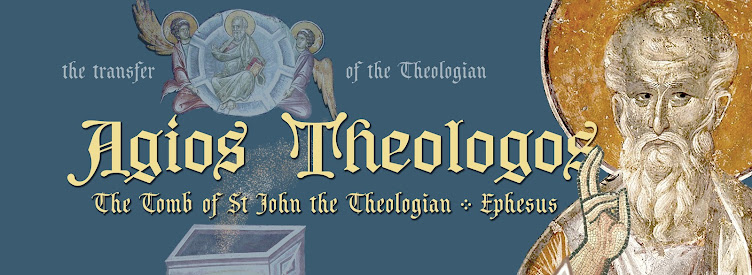A Pilgrimage Blessing
The term a pilgrimage evlogia (Greek: ευλογια), a pilgrimage blessing, refers to a blessed object connected to a pilgrimage shrine.
From the first centuries of Christianity, a pilgrimage was a journey to a holy place which allowed the pilgrim to partake of the holiness of that place by physically being present there: simply put, to receive the blessing of that place. Ever pilgrim wished to take something away which was infused with the holiness of the place of pilgrimage, whether it be a fragment of relics, or more often, some object which was somehow connected to that place.
With the growth of pilgrimage, monastics and clergy at pilgrimage sites began to produce objects, or “evlogie” which they would give to pilgrims as a blessing. Most often these were containers with holy oil from the oil lamps at the relics, oil which was poured over relics, or oil-myrrh which flowed from the relics themselves. Or there were containers with holy water, water from springs at those holy places - “agiasma” (Greek for holy water). Another blessing was containers with dust from the holy places, or simply wax from candles which were lit at the shrines. These containers which were called pilgrim’s blessings were usually decorated with crosses or images connected to the particular shrine. This type of relic became prominent in the 4th century and continued until the 12th century.
 |
| A pilgrim flask from Ephesus (Louvre Museum). The ampoule shows the Evangelist John. 6th century |
Pilgrim Ampoules – Evlogie with dust from the tomb of St. John the Theologian
Pilgrims carried with them to all over the world ampoules (evlogie) with healing dust from the tomb of St. John the Theologian. These were little flasks, most often made of ceramic, terracotta, glass, or lead which looked like flattened gourds with two handles on either side of the flask’s neck. The dimensions of these flasks were around 2 cm in diameter to 4 x 2 cm. They were made so that pilgrims could carry the healing dust around their necks with them. They either had a relief of St. John the Theologian on them, or were simply decorated dwith several crosses.
Today, examples of the pilgrimage ampoules of St. John the Theologian can be seen in the treasury of the Lateran Basilica in Rome (Italy), the Ephesian Archaeological Museum in Selçuk (Turkey), the Louvre Museum (France), the Sparlock Museum in Urbana (Illinois, The U.S . Historical Museum in Burgas (Bulgaria), the British Museum in London (England) and elsewhere.
Illustration:
1 – Louvre Museum, 2 – Museum of Ephesus, 3 – Spurlock Museum, 4 – Burgas
Museum, 5 – British Museum


No comments:
Post a Comment